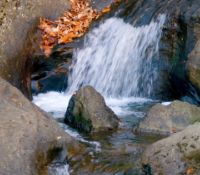FISHnLAB
Member
Hi guys, I have always ran air stones in my tanks(low tech) but, have recently been wondering if one can overdue it?
I generally run air stones pretty low, to keep noise at bay, and run fine bubble ones in all of my tanks now along with good surface agitation from my filter outputs just as kind of a one-two gas exchange punch if you will. I have noticed, with these fine bubble ones, that I now get much more microbubbles carried in the current around the tank(especially if placed near filter output) and that the amount can be adjusted by pump/air stone output similar to CO2 on high tech tanks. This got me to thinking about if in a worst case scenario one could overdo it or maybe even cause gas bubble disease in some of their livestock?
So, what do you guys think? How does one determine the right amount of aeration? How much is too much? Are there any dangers or is it just an aesthetic thing(ie too many ugly bubbles in my tank😂)?
Thanks for the input guys👍.
I generally run air stones pretty low, to keep noise at bay, and run fine bubble ones in all of my tanks now along with good surface agitation from my filter outputs just as kind of a one-two gas exchange punch if you will. I have noticed, with these fine bubble ones, that I now get much more microbubbles carried in the current around the tank(especially if placed near filter output) and that the amount can be adjusted by pump/air stone output similar to CO2 on high tech tanks. This got me to thinking about if in a worst case scenario one could overdo it or maybe even cause gas bubble disease in some of their livestock?
So, what do you guys think? How does one determine the right amount of aeration? How much is too much? Are there any dangers or is it just an aesthetic thing(ie too many ugly bubbles in my tank😂)?
Thanks for the input guys👍.
Last edited:



